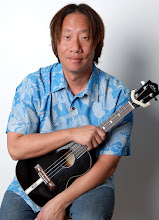 Wow what a weekend it was! It was like history in the making - a beautiful afternoon and evening with some of the biggest names in Hawaiian entertainment from the islands and Southern California: Kekaimoku Yoshikawa and Leokane Pryor knocked it out of the park, Pomaika'i Keawe Lyman's first ever solo concert performance, Weldon Kekauoha, Bryan Tolentino and Alika Boy delivered a solidly entertaining set which ended in Weldon's beautiful arrangement of "Queen's Jubilee"...and a very rare concert appearance by the legendary Uncle Richard Ho'opi'i - to name just a few highlights!
Wow what a weekend it was! It was like history in the making - a beautiful afternoon and evening with some of the biggest names in Hawaiian entertainment from the islands and Southern California: Kekaimoku Yoshikawa and Leokane Pryor knocked it out of the park, Pomaika'i Keawe Lyman's first ever solo concert performance, Weldon Kekauoha, Bryan Tolentino and Alika Boy delivered a solidly entertaining set which ended in Weldon's beautiful arrangement of "Queen's Jubilee"...and a very rare concert appearance by the legendary Uncle Richard Ho'opi'i - to name just a few highlights! If you didn't make it to the show, I'll fill you in on what you missed but first I'd like to share one of my personal favorite moments: when the three kumu hula got up to dance at the end of the show! Pomaika'i sang a 3-song medley of Pauoa Liko Kalehua, Mauna Loa and Haleiwa Hula that was danced by Keali'i Ceballos, Rolanda Reese and Kekaimoku, respectively. The idea first came about when we were doing the live podcast with Piko on the Hawaiian Concert Guide and we were talking with Pomaika'i and her father Eric. They sang that medley to us over the Skype lines and someone had the idea to have the three kumu each do one of the songs. It could have been my idea because of my involvement with flamenco where that kind of thing happens very often at the end of a show - they like to get the singer or the percussionist or the guitarist to dance a little at the end to show what they know and it never fails to make the audience go nuts! Rolanda, also known as "Aunty Mohala" is a well-known kumu but is actually very shy and talk about historic moments - for her to get in front of the mic on the podcast and to get out on stage like that was a very rare thing indeed. Even I had never seen her dance before so it was such a treat to see! By the way, don't forget about the big show she's putting on August at the John Anson Ford Amphitheatre Saturday August, 29, 2009.
More to come....


